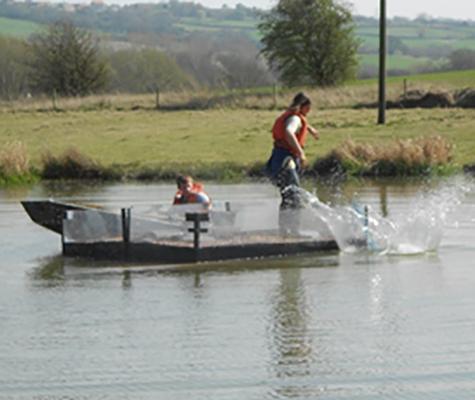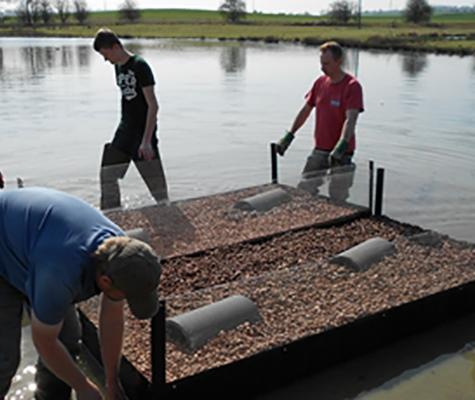Carr Vale Nature Reserve, described as “the jewel in the crown of Derbyshire Wildlife Trust’s reserves”, is a regionally- and nationally-important habitat for birds, with some 211 species of bird recorded there.
Though home to regionally and nationally rare species, it is the sheer diversity of breeding bird species that makes this reserve special. Amongst these breeding bird species are those that require rafts to nest on, not least Common Tern and Black-headed Gull; the latter being particularly effective at driving off predators during the breeding season.
The first raft at the reserve was launched in 2006 and was immediately used by a pair of terns, who raised three chicks. Another year and another raft and it became clear that the reserve had many more potential occupants than raft space when a pair of Canadian Geese and Common Coots started using the rafts. The geese and coots, well known for being aggressive during the breeding season, either evicted their neighbours or, tragically, killed the chicks that had hatched. More rafts were needed to help increase the Common Tern and Black-headed Gull population, as well as support these other species.
DWT applied to Valencia Communities Fund for funding to install four new rafts and repair the existing rafts. Their application was successful and the work carried out in April 2012 saw the floatation of the new rafts as well as two smaller rafts salvaged from the remains of the old ones. It is hoped that this extra room will make a significant impact on the numbers of the Common Tern, and maintain the reserve's special bird population.
UPDATE - 15 August 2012
Oystercatchers - One of the rafts was used by a pair of Oystercatchers, and they hatched three young. Two have survived into near-adulthood and it won't be long until they're flying. This is a great improvement on 2011, where a pair of birds nested twice but failed to rear any young.
Black-headed Gulls - one pair hatched two young on one of the revamped rafts, one of which fledged. A second pair of gulls hatched three young on the other revamped raft and they have all fledged. A third pair currently have two young on one of the new rafts. Additionally, a fourth pair of gulls laid three eggs but abandoned their nest and a fifth pair built a nest but deserted it early on. Another bird is apparently sitting, which may be a sixth pair or a second brood by the successful first pair. This is a vast improvement on 2011 when only one pair nested and failed to raise any young at all.
Common Tern - one pair did nest on one of the new rafts but were sat for so long it became apparent that the eggs did not hatch.This is a similiar situation to 2011. However, it is positive that no Canada geese or coots were able to nest on any of the rafts this year, whereas last year, single pairs of each raised young.
In the words of Mark Beevers. Volunteer Rreseve Manager: "despite the failure of the terns to hatch any young, the new rafts have been a resounding success".

